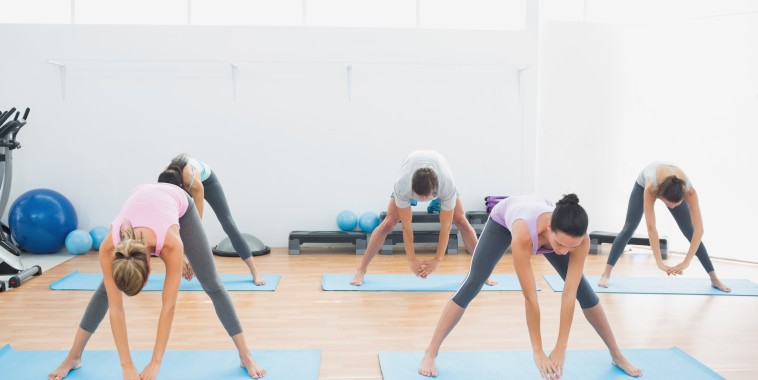Pilates was developed by the physical trainer Joseph Pilates (1880-1967) in 1920s. It was created for the aim of rehabilitation. Joseph Pilates treated soldiers who came back from war and dancers to cure their pain and strengthen their bodies. Until today, though some modifications have been made, the basic principles of Pilates have been preserved.
It is a form of exercise that emphasizes the balanced development of the body by way of core strength, awareness and flexibility in order to sustain graceful and efficient movement.
Unlike those challenging, fast, heavy, high-resistance and intense workouts, the world of Pilates mainly evolves on lying on the floor and moving the legs up around the air. You might be skeptical and various questions come running in your mind on how a moderate form of exercise such as Pilates can benefit your body. Read on and you might be surprised on how this “gentle” form of exercise, when done correctly, can boast HUGE benefits!
Everyone can benefit from Pilates—athletes, couch potatoes, men, and women; individuals of all body weights and shapes; individuals of all levels of physical fitness. It truly does offer incredible to each person.
Its Benefits
1. Pilates is a refreshing mind-body workout.
By performing correct breathing, proper pelvic and spinal alignment, and focus on smooth, flowing movement, you become connected with your body. In Pilates, the quality of your performance and movement is more important than the quantity of repetitions. In fact, proper breathing is a relaxation technique and can alleviate stress.
2. Pilates develops a strong “core” or center of the body, flat abdominals and a strong back.
The center or “core” of your body is comprised of the deep abdominal muscles and the muscles closest to your spine. Being able to control your core is attained by incorporating the pelvis, trunk and shoulder girdle.
3. Through Pilates, you can gain long, lean muscles and flexibility.
The traditional, weight bearing workouts are more inclined to build short, bulky muscles. These types of exercise make you more prone to injury. Meanwhile, Pilates is an exercise that lengthens and strengthens, enhancing joint mobility and muscle elasticity. A body with balanced flexibility and strength are safe from any type of injury.
4. Achieve an evenly conditioned body, improve sports performance, and prevent injuries through Pilates.
The traditional workouts work on the same muscles meaning weak muscles become weaker and strong muscles become stronger; thus, resulting in muscular imbalance – a major cause of chronic back pain and injury.
Pilates conditions your ankles, feet and your entire body. So, no muscles are under trained or over trained. Your whole musculature is equally conditioned. Pilates helps you to enjoy everyday activities with ease, improves performance and promotes the lesser possibility of injury. These are the reasons why several professional athletes employ Pilates as a vital part of their training routine.
5. Learn how to move efficiently with Pilates.
Pilates trains different muscle groups all at once through smooth, constant movements. Developing right techniques re-trains your body to move in more proficient patterns of motion and supports good posture.
6. Pilates is a gentle exercise.
Several of the exercises are executed through sitting or reclining positions. Routines are low impact and moderately weight bearing. Pilates is safe. In fact, it is utilized in physical therapy facilities to regenerate injuries.
7. But Pilates is also challenging.
Pilates is an exceptionally flexible exercise method. Alterations in Pilates are available for an array of complexity, from beginning to advanced. Therefore, acquire the workout that most excellently suits you now, and raise the intensity as your body conditioning progresses.
If you are still not convinced, watch Pilates videos in the privacy of your own home or attend a Pilates session! It requires more than one session to fully understand an exercise and how to do its routines, so try Pilates at least three to five times before giving up.







